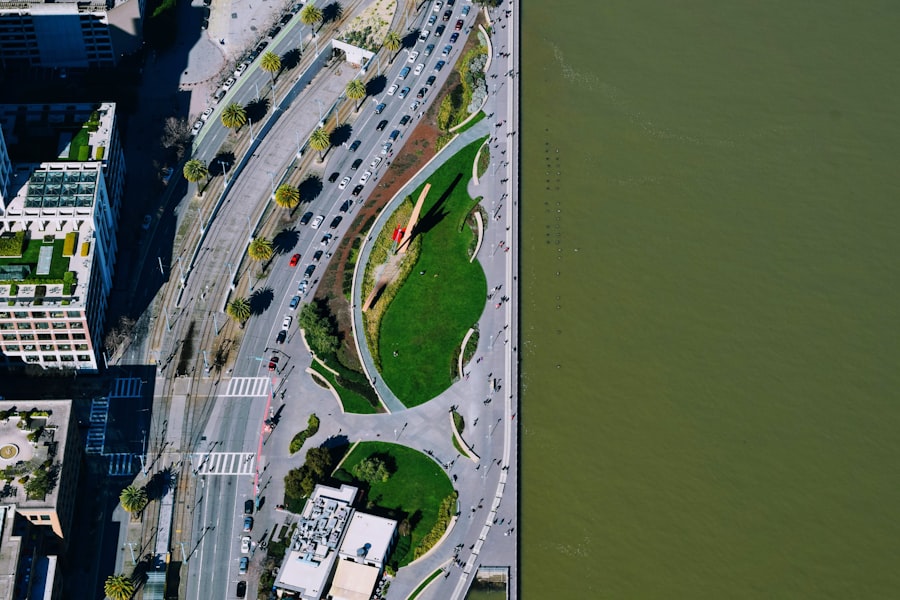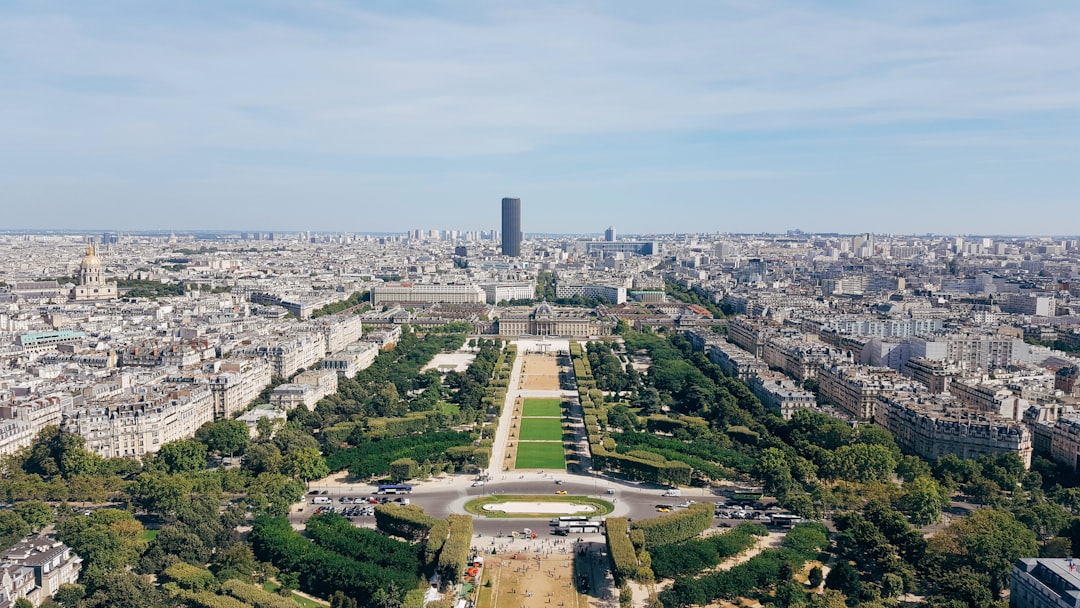Colonial cities emerged as a direct consequence of European expansion and imperial ambitions from the 15th to the 20th centuries. These urban centers were not merely settlements; they were strategic outposts designed to facilitate trade, exert control over local populations, and serve as administrative hubs for colonial powers. The architecture, layout, and social dynamics of these cities were heavily influenced by the cultural and political ideologies of their European founders.
The establishment of colonial cities was marked by a distinct dichotomy between the colonizers and the colonized. European settlers often occupied the most desirable areas, characterized by grand boulevards, public squares, and monumental buildings that reflected their cultural heritage.
In contrast, indigenous populations were frequently relegated to peripheral areas, where living conditions were markedly inferior. This spatial segregation not only reinforced social hierarchies but also laid the groundwork for enduring inequalities that persist in many post-colonial societies today. The legacy of these colonial cities continues to shape urban identities and social relations, making them a focal point for understanding the complexities of urban development in a historical context.
Key Takeaways
- Colonial cities were established by European powers during the colonial period for administrative, economic, and strategic purposes.
- European urban planning principles, such as grid layouts and central plazas, heavily influenced the design of colonial cities.
- Indigenous and local communities played a significant role in the development of colonial cities, contributing traditional knowledge and practices to urban planning and architecture.
- Colonialism had a lasting impact on urban infrastructure, shaping the layout of roads, buildings, and public spaces in colonial cities.
- The legacy of colonial city layouts continues to influence modern urban planning, presenting both challenges and opportunities for preserving historical and cultural heritage.
The Influence of European Urban Planning
The Grid Pattern: A Hallmark of Colonial Urban Design
The grid pattern became a defining feature of colonial urban design, facilitating navigation and control while symbolizing the rationality of European thought. Cities like Philadelphia and New Orleans were designed with this grid system in mind, allowing for efficient land use and the easy implementation of administrative functions.
Public Spaces: Creating a Sense of Community and Civic Pride
The incorporation of public spaces such as parks, squares, and avenues was a deliberate attempt to create a sense of community and civic pride among European settlers. These spaces often served as venues for social gatherings, markets, and public ceremonies, reinforcing the cultural values of the colonizers.
Grand Plazas: Focal Points for Colonial Governance
In cities like Havana and Manila, colonial authorities constructed grand plazas surrounded by important government buildings and churches, showcasing their architectural prowess and serving as focal points for colonial governance. This emphasis on public space reflected a broader European belief in the importance of civic engagement and community cohesion, albeit one that was often exclusionary towards indigenous populations.
The Role of Indigenous and Local Communities in City Development

While colonial powers exerted significant control over urban planning and development, indigenous and local communities played crucial roles in shaping the character of colonial cities. Often overlooked in historical narratives, these communities contributed to the labor force that built the infrastructure of colonial cities. Their knowledge of local materials, climate conditions, and agricultural practices informed construction techniques and urban layouts that were more suited to the environment than those imposed by European planners.
In many cases, indigenous populations adapted to the new urban realities imposed by colonialism while simultaneously preserving elements of their cultural identity. For instance, in cities like Lima and Mexico City, local artisans continued to practice traditional crafts alongside European styles, resulting in a unique blend of architectural influences. This syncretism is evident in the vibrant markets that sprang up in colonial cities, where indigenous goods coexisted with European imports.
These markets not only served as economic hubs but also as cultural spaces where diverse communities interacted, negotiated their identities, and resisted colonial impositions.
The Impact of Colonialism on Urban Infrastructure
The impact of colonialism on urban infrastructure was profound and multifaceted. Colonial authorities prioritized the development of infrastructure that facilitated resource extraction and trade over the needs of local populations. Roads, railways, ports, and telecommunication systems were constructed primarily to serve colonial interests rather than to enhance the quality of life for indigenous residents.
For example, in India, the British built an extensive railway network that connected resource-rich regions to ports for export but often neglected rural areas that lacked basic amenities such as clean water and sanitation. Furthermore, the introduction of Western-style sanitation systems and public health measures was often inconsistent and poorly implemented. While some colonial cities saw improvements in infrastructure that reduced disease transmission—such as sewer systems in cities like Nairobi—these developments were frequently limited to areas inhabited by Europeans.
Indigenous neighborhoods often remained underserved, leading to public health crises that disproportionately affected local populations. The legacy of this neglect is still evident today in many post-colonial cities where disparities in infrastructure continue to reflect historical injustices.
The Legacy of Colonial City Layouts in Modern Urban Planning
The legacy of colonial city layouts is deeply embedded in modern urban planning practices across the globe. Many contemporary cities still bear the marks of their colonial pasts, with street names, architectural styles, and urban layouts reflecting historical power dynamics. In cities like New Delhi, where British colonial planners designed wide avenues and grand government buildings, the spatial organization continues to influence contemporary urban development.
The challenge lies in reconciling these historical legacies with modern needs for inclusivity and sustainability. Moreover, the persistence of colonial-era zoning laws and land-use policies can perpetuate social inequalities in post-colonial societies. In many cases, urban planning continues to favor affluent neighborhoods while neglecting marginalized communities that were historically relegated to peripheral areas.
This has led to ongoing debates about gentrification and displacement in cities like Cape Town and Rio de Janeiro, where former colonial districts are being redeveloped at the expense of long-standing local residents. As urban planners grapple with these issues, there is an increasing recognition of the need to incorporate historical context into contemporary planning efforts.
Challenges and Opportunities for Preserving Colonial City Layouts

Preserving colonial city layouts presents both challenges and opportunities for urban planners and policymakers. On one hand, there is a growing appreciation for the historical significance of these urban environments as cultural heritage sites that tell stories of resilience and adaptation. Cities like Cartagena in Colombia have embraced their colonial architecture as a means to promote tourism while fostering local pride.
However, this preservation often raises questions about whose history is being celebrated and who benefits from such initiatives. On the other hand, there are significant challenges associated with preserving colonial city layouts amidst rapid urbanization and globalization. The pressures of modern development can lead to the erosion of historical sites as new construction projects prioritize economic growth over cultural heritage.
In many cases, local communities may resist preservation efforts if they perceive them as disconnected from their current needs or aspirations. Striking a balance between honoring historical legacies while addressing contemporary urban challenges requires innovative approaches that engage local stakeholders in meaningful ways. In conclusion, understanding the complexities surrounding colonial cities necessitates a nuanced exploration of their historical contexts, architectural influences, and social dynamics.
By examining these factors through various lenses—be it indigenous contributions or modern planning practices—urban scholars can better appreciate how colonial legacies continue to shape our cities today.






















+ There are no comments
Add yours